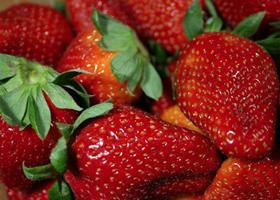
Growers of everbearing strawberry varieties have been warned by biological pest control specialist Biobest that the end of spring and the beginning of summer are ideal periods for thrips to invade berry fields.
“The peak is usually observed around late May/early June,' said Julien Mourrut-Salesse, pollination specialist at Biobest.
According to the group, a rapid and massive pest attack requires an effective answer, and in strawberries the predatory mite Amblyseius swirskii is a trustworthy beneficial.
When thrips are already present on the plants and fruits, A. swirskii actively looks for thrips on flowers, leaves and fruits.
With the application of Nutrimite, Biobest’s 100 per cent natural food supplement made from a special selection of pollen, growers can bring their swirskii army at fighting strength before the pest arrives, the company added.
“Nutrimite contributes significantly to a successful and preventative installation of swirskii in strawberry,' Morrut-Salesse continued. 'We saw twice the population level compared to a situation without an alternative food source. This strategy is very effective especially against thrips that appear on the fruits. Moreover, a good population of swirskii also helps to control spider mites and whitefly, other important pests in strawberry.”
In addition to thrips, spider mites and whitefly, strawberry growers may also face aphid attacks, according to Morrut-Salesse.
“For effective aphid biocontrol, Biobest recommends a preventive strategy based on the Aphi-Mix-System, a ‘blend’ of four species of parasitic wasps (Aphidius colemani, Aphidius ervi, Aphidius matricariae and Aphelinus abdominalis) and Aphidoletes-System, containing the gall midge Aphidoletes aphidimyza.
'Aphi-Mix can be applied when temperatures are above 12°C, adding Aphidoletes from the moment minimum temperatures stay above 16 degrees Celsius,' he added. 'Finally, in case of an aphid infestation, the gall midge and the green lacewing Chrysoperla carnea can be used curatively.”



